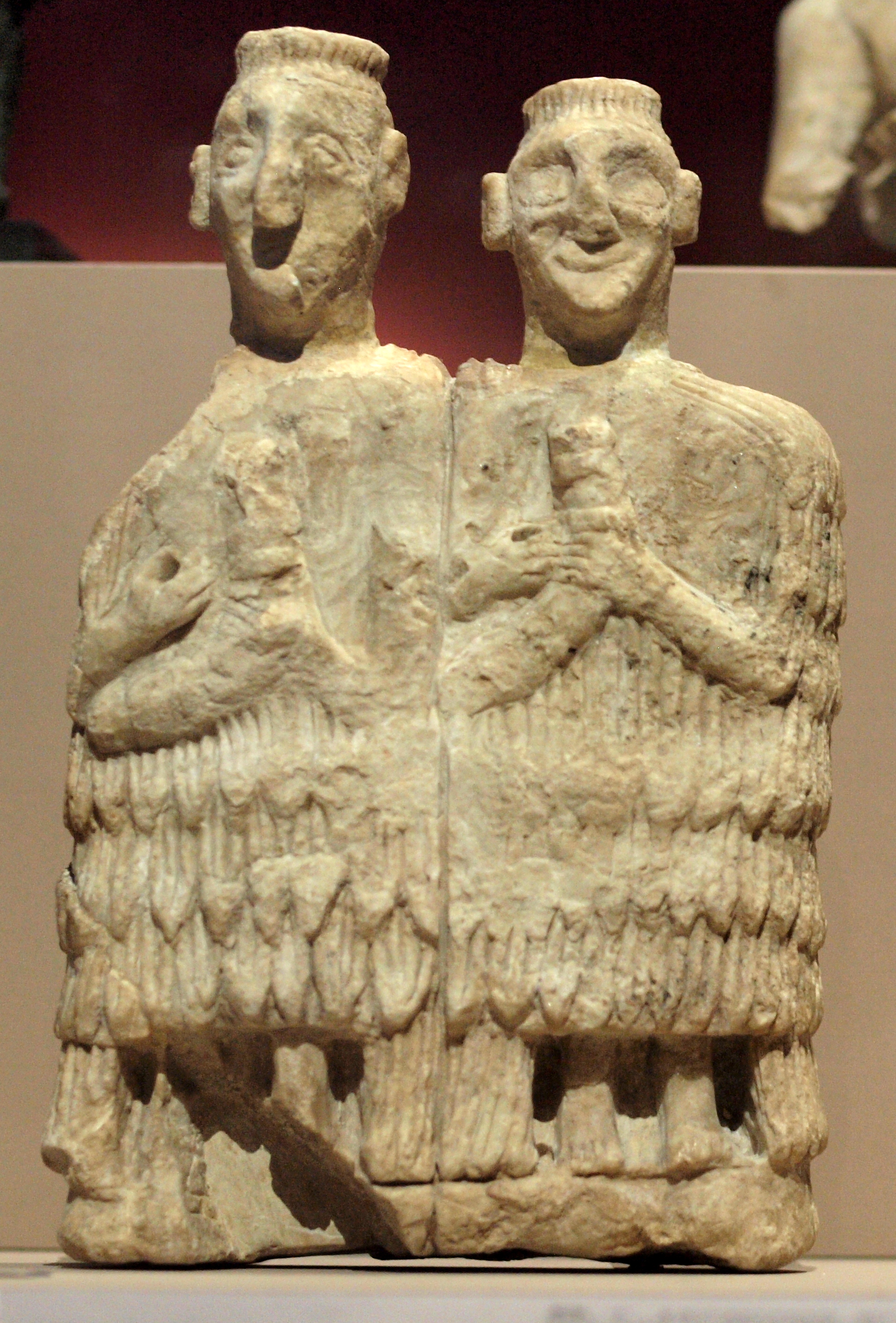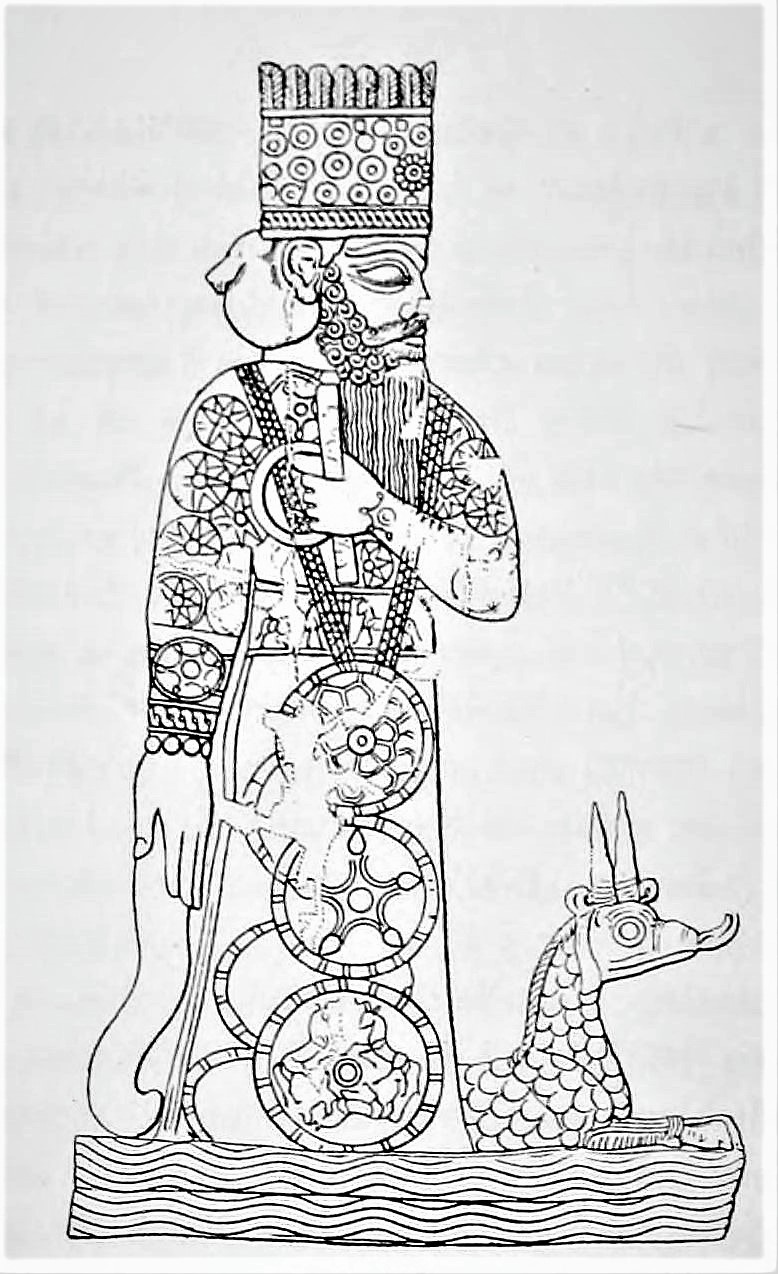|
Balag
In Mesopotamia, a balag (or balaĝ) refers both to a Sumerian religious literary genre and also to a closely associated musical instrument. In Mesopotamian religion, Balag prayers were sung by a Gala priest as ritual acts were performed around the instrument. Sometimes the instrument itself was regarded as a minor deity, and every balag had a proper name. Despite the importance of the instrument in the rituals, its identity is disputed, but is generally thought to be either a drum or a string instrument such as a lyre. The purpose of the ritual involving this prayer and instrument was to soothe the local deity with pleasings sounds, while lamenting what may happen to the city should the god decide to abandon it. Balags were used from the Old Babylonian period to the Seleucid Empire. Characteristics As a literary genre, the balag was written in the cuneiform script and sung by the Gala priest in a dialect of Sumerian called ''Emesal'' ( eme-sal). Each balag is composed for a pa ... [...More Info...] [...Related Items...] OR: [Wikipedia] [Google] [Baidu] |
Music Of Mesopotamia
Music was ubiquitous throughout Mesopotamian history, playing important roles in both religious and secular contexts. Mesopotamia is of particular interest to scholars because evidence from the region—which includes artifacts, artistic depictions and written records—places it among the earliest well-documented cultures in the history of music. The discovery of a bone wind instrument dating to the 5th millennium BCE provides the earliest evidence of music culture in Mesopotamia; depictions of music and musicians appear in the 4th millennium BCE; and later, in the city of Uruk, the pictograms for ‘harp’ and ‘musician’ are present among the earliest known examples of writing. Music played a central role in Mesopotamian religion and some instruments themselves were regarded as minor deities and given proper names, such as the Ninigizibara. Its use in secular occasions included festivals, warfare and funerals—among all classes of society. Mesopotamians sang and playe ... [...More Info...] [...Related Items...] OR: [Wikipedia] [Google] [Baidu] |
Gala (priests)
The Gala ( Sumerian: ''gala'', Akkadian: ''kalû'') were priests of the Sumerian goddess Inanna. They made up a significant number of the personnel of both temples and palaces, the central institutions of Mesopotamian city states. Originally specialists in singing lamentations, gala appear in temple records dating back from the middle of the 3rd millennium BC. According to an old Babylonian text, Enki created the gala specifically to sing "heart-soothing laments" for the goddess Inanna. Cuneiform references indicate the gendered character of the role. Lamentation and wailing may have originally been female professions, so that the men who entered the role adopted its forms. Their hymns were sung in a Sumerian dialect known as ''eme-sal'', normally used to render the speech of female gods, and some gala took female names. Homosexual proclivities are implied by the Sumerian proverb which reads, "When the gala wiped off his anus e said ‘I must not arouse that which belongs to my ... [...More Info...] [...Related Items...] OR: [Wikipedia] [Google] [Baidu] |
Standing Male Worshiper
Standing, also referred to as orthostasis, is a position in which the body is held in an ''erect'' ("orthostatic") position and supported only by the feet. Although seemingly static, the body rocks slightly back and forth from the ankle in the sagittal plane. The sagittal plane bisects the body into right and left sides. The sway of quiet standing is often likened to the motion of an inverted pendulum. Standing at attention is a military standing posture, as is stand at ease, but these terms are also used in military-style organisations and in some professions which involve standing, such as modeling. ''At ease'' refers to the classic military position of standing with legs slightly apart, not in as formal or regimented a pose as standing at attention. In modeling, ''model at ease'' refers to the model standing with one leg straight, with the majority of the weight on it, and the other leg tucked over and slightly around. Control Standing posture relies on dynamic rather than st ... [...More Info...] [...Related Items...] OR: [Wikipedia] [Google] [Baidu] |
Cuneiform
Cuneiform is a logo-syllabic script that was used to write several languages of the Ancient Middle East. The script was in active use from the early Bronze Age until the beginning of the Common Era. It is named for the characteristic wedge-shaped impressions (Latin: ) which form its signs. Cuneiform was originally developed to write the Sumerian language of southern Mesopotamia (modern Iraq). Cuneiform is the earliest known writing system. Over the course of its history, cuneiform was adapted to write a number of languages in addition to Sumerian. Akkadian texts are attested from the 24th century BC onward and make up the bulk of the cuneiform record. Akkadian cuneiform was itself adapted to write the Hittite language in the early second millennium BC. The other languages with significant cuneiform corpora are Eblaite, Elamite, Hurrian, Luwian, and Urartian. The Old Persian and Ugaritic alphabets feature cuneiform-style signs; however, they are unrelated to the cuneiform lo ... [...More Info...] [...Related Items...] OR: [Wikipedia] [Google] [Baidu] |
Stanley Sadie
Stanley John Sadie (; 30 October 1930 – 21 March 2005) was an influential and prolific British musicologist, music critic, and editor. He was editor of the sixth edition of the '' Grove Dictionary of Music and Musicians'' (1980), which was published as the first edition of ''The New Grove Dictionary of Music and Musicians''. Along with Thurston Dart, Nigel Fortune and Oliver Neighbour he was one of Britain's leading musicologists of the post-World War II generation. Career Born in Wembley, Sadie was educated at St Paul's School, London, and studied music privately for three years with Bernard Stevens. At Gonville and Caius College, Cambridge he read music under Thurston Dart. Sadie earned Bachelor of Arts and Bachelor of Music degrees in 1953, a Master of Arts degree in 1957, and a PhD in 1958. His doctoral dissertation was on mid-eighteenth-century British chamber music. After Cambridge, he taught at Trinity College of Music, London (1957–1965). Sadie then turned to musi ... [...More Info...] [...Related Items...] OR: [Wikipedia] [Google] [Baidu] |
The New Grove Dictionary Of Music And Musicians
''The New Grove Dictionary of Music and Musicians'' is an encyclopedic dictionary of music and musicians. Along with the German-language ''Die Musik in Geschichte und Gegenwart'', it is one of the largest reference works on the history and theory of music. Earlier editions were published under the titles ''A Dictionary of Music and Musicians'', and ''Grove's Dictionary of Music and Musicians''; the work has gone through several editions since the 19th century and is widely used. In recent years it has been made available as an electronic resource called ''Grove Music Online'', which is now an important part of ''Oxford Music Online''. ''A Dictionary of Music and Musicians'' ''A Dictionary of Music and Musicians'' was first published in London by Macmillan and Co. in four volumes (1879, 1880, 1883, 1889) edited by George Grove with an Appendix edited by J. A. Fuller Maitland in the fourth volume. An Index edited by Mrs. E. Wodehouse was issued as a separate volume in 1890. In ... [...More Info...] [...Related Items...] OR: [Wikipedia] [Google] [Baidu] |
Ancient Mesopotamian Religion
Mesopotamian religion refers to the religious beliefs and practices of the civilizations of ancient Mesopotamia, particularly Sumer, Akkad, Assyria and Babylonia between circa 6000 BC and 400 AD, after which they largely gave way to Syriac Christianity practiced by today's Assyrians. The religious development of Mesopotamia and Mesopotamian culture in general, especially in the south, was not particularly influenced by the movements of the various peoples into and throughout the area. Rather, Mesopotamian religion was a consistent and coherent tradition which adapted to the internal needs of its adherents over millennia of development. The earliest undercurrents of Mesopotamian religious thought are believed to have developed in Mesopotamia in the sixth millennium BC, coinciding with the region beginning to be permanently settled. The earliest evidence of Mesopotamian religion date to the mid-fourth millennium BC, coinciding with the invention of writing, and involved th ... [...More Info...] [...Related Items...] OR: [Wikipedia] [Google] [Baidu] |
Gudea
Gudea ( Sumerian: , ''Gu3-de2-a'') was a ruler ('' ensi'') of the state of Lagash in Southern Mesopotamia, who ruled circa 2080–2060 BC ( short chronology) or 2144-2124 BC (middle chronology). He probably did not come from the city, but had married Ninalla, daughter of the ruler Ur-Baba (2164–2144 BC) of Lagash, thus gaining entrance to the royal house of Lagash. He was succeeded by his son Ur-Ningirsu. Gudea ruled at a time when the center of Sumer was ruled by the Gutian dynasty, and when Ishtup-Ilum ruled to the north in Mari. Under Gudea, Lagash had a golden age, and seemed to enjoy a high level of independence from the Gutians. Inscriptions Gudea chose the title of ''énsi'' (town-king or governor), not the more exalted ''lugal'' (Akkadian ''šarrum''). Gudea did not style himself "god of Lagash" as he was not deified during his own lifetime, this title must have been given to him posthumously as in accordance with Mesopotamian traditions for all rulers except Naram-S ... [...More Info...] [...Related Items...] OR: [Wikipedia] [Google] [Baidu] |
Eduba
Edubba ( sux, ) is the Sumerian for "scribal school." The eduba was the institution that trained and educated young scribes in ancient Mesopotamia during the late third or early second millennium BCE. Most of the information known about edubas comes from cuneiform texts dating to the Old Babylonian period (ca. 2000-1600 BCE). Spelling and etymology Edubba is written ''e2-dub-ba-a'' in Sumerian. The literal meaning is "house of tablets". Archaeological evidence Archaeological evidence for the Old Babylonian school system suggests that scribal education was small-scale and usually took place in private homes. School tablets have been found in private residences in many sites across Mesopotamia. Some houses, where particularly large numbers of school tablets were unearthed, have been interpreted by archaeologists as "school houses" or homes in which scribal education almost certainly took place. The best example of this is House F in the city of Nippur. Nearly one and a hal ... [...More Info...] [...Related Items...] OR: [Wikipedia] [Google] [Baidu] |
City Lament
A City Lament is a poetic elegy for a lost or fallen city. This literary genre, from around 2000 BCE onwards, was particularly prevalent in the Mesopotamian region of the Ancient Near East. The Bible's Book of Lamentations concerning Jerusalem around 586 BCE, contains some elements of a city lament. Features In the five known Mesopotamian City Laments, the lament is written in voice of the city's tutelary goddess. The destruction of the city, the mass killing of its inhabitants, and the loss of its central temple are vividly described. Special attention is given to the divine sphere, where the gods order the destruction of the city, the city patron gods implore against this, but in vain. The patron gods are exiled to live as deportees in foreign cites, lamenting their devastated shrine. Subsequently they return from exile and renew their former existence. Mesopotamia The Lament for Ur, or Lamentation over the city of Ur is a Sumerian lament composed around the time of the fall o ... [...More Info...] [...Related Items...] OR: [Wikipedia] [Google] [Baidu] |
Seleucid Empire
The Seleucid Empire (; grc, Βασιλεία τῶν Σελευκιδῶν, ''Basileía tōn Seleukidōn'') was a Greek state in West Asia that existed during the Hellenistic period from 312 BC to 63 BC. The Seleucid Empire was founded by the Macedonian general Seleucus I Nicator, following the division of the Macedonian Empire originally founded by Alexander the Great. After receiving the Mesopotamian region of Babylonia in 321 BC, Seleucus I began expanding his dominions to include the Near Eastern territories that encompass modern-day Iraq, Iran, Afghanistan, Syria, all of which had been under Macedonian control after the fall of the former Persian Achaemenid Empire. At the Seleucid Empire's height, it had consisted of territory that had covered Anatolia, Persia, the Levant, and what are now modern Iraq, Kuwait, Afghanistan, and parts of Turkmenistan. The Seleucid Empire was a major center of Hellenistic culture. Greek customs and language were privileged; the wide varie ... [...More Info...] [...Related Items...] OR: [Wikipedia] [Google] [Baidu] |






.jpg)

